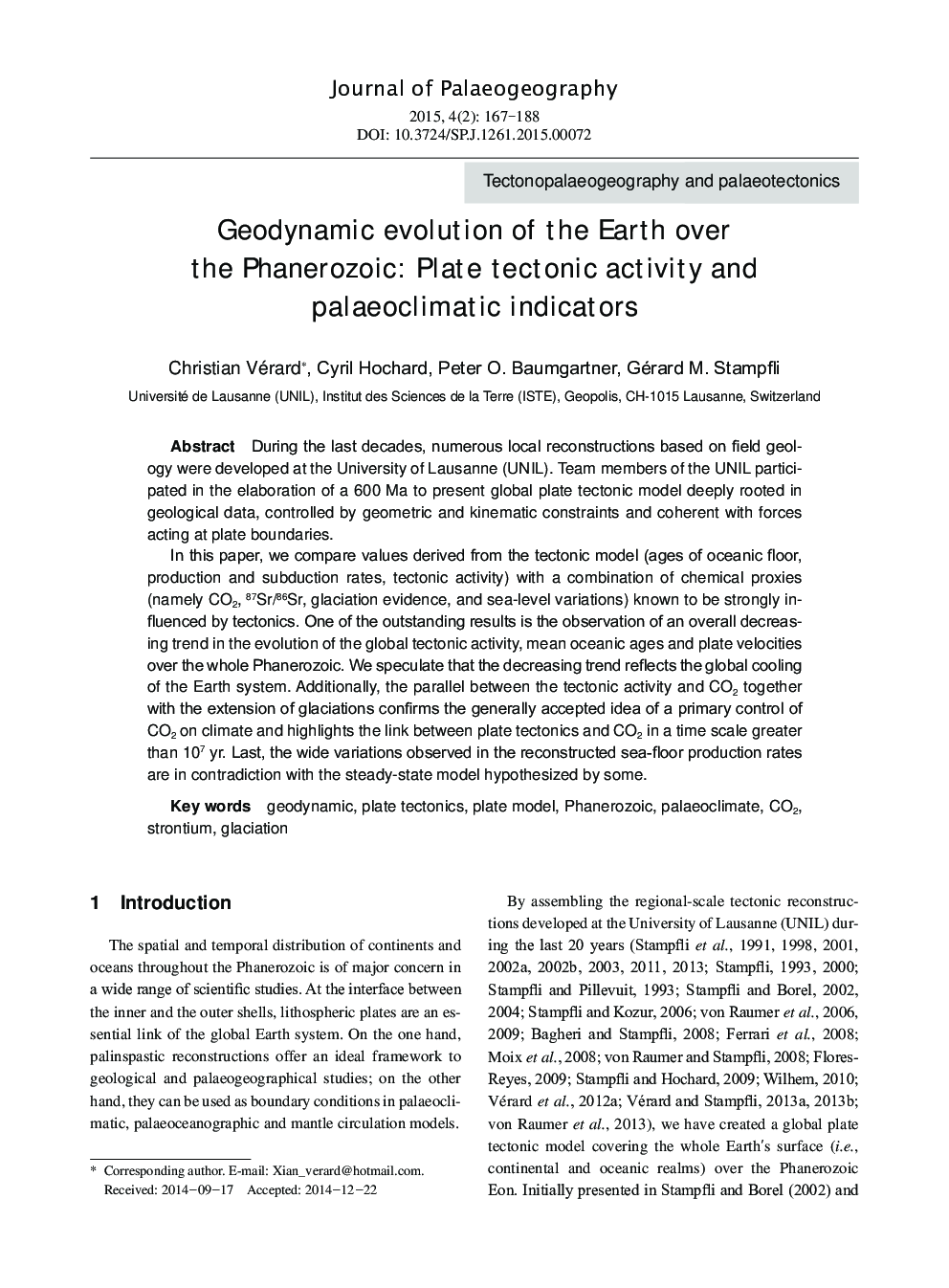| Article ID | Journal | Published Year | Pages | File Type |
|---|---|---|---|---|
| 4581010 | Journal of Palaeogeography | 2015 | 22 Pages |
During the last decades, numerous local reconstructions based on field geology were developed at the University of Lausanne (UNIL). Team members of the UNIL participated in the elaboration of a 600 Ma to present global plate tectonic model deeply rooted in geological data, controlled by geometric and kinematic constraints and coherent with forces acting at plate boundaries.In this paper, we compare values derived from the tectonic model (ages of oceanic floor, production and subduction rates, tectonic activity) with a combination of chemical proxies (namely CO2, 87Sr/86Sr, glaciation evidence, and sea-level variations) known to be strongly influenced by tectonics. One of the outstanding results is the observation of an overall decreasing trend in the evolution of the global tectonic activity, mean oceanic ages and plate velocities over the whole Phanerozoic. We speculate that the decreasing trend reflects the global cooling of the Earth system. Additionally, the parallel between the tectonic activity and CO2 together with the extension of glaciations confirms the generally accepted idea of a primary control of CO2 on climate and highlights the link between plate tectonics and CO2 in a time scale greater than 107 yr. Last, the wide variations observed in the reconstructed sea-floor production rates are in contradiction with the steady-state model hypothesized by some.
